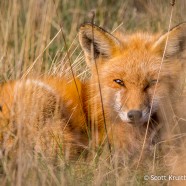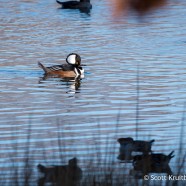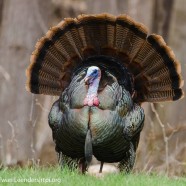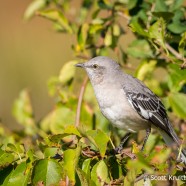Winter “Bird” Forecast #4 – Foxes!
Here are Stratford Point’s Red Foxes featured in last week’s winter “bird” forecast with Audubon Connecticut: http://wxedge.com/2015/12/14/foxes/
Read MoreHooded Mergansers
It has been a great autumn for Hooded Mergansers (Lophodytes cucullatus) even as we near the end of the season, with all of the above-average temperatures, little ice and rarely seen snow. Courting is well underway for these birds as you can see by the striking black-and-white crests being displayed by the drakes. The several hens present on this pond were mostly preoccupied with trying to take a nap or grabbing a bite to eat. The boys kept swimming after them, vocalizing and trying their best to get some attention. When it comes time to breed these birds will be making their nests in tree...
Read MoreHappy Thanksgiving
Happy Thanksgiving from all of us at the Roger Tory Peterson Institute of Natural History!
Read MoreRed Fox (Vulpes vulpes)
This Red Fox (Vulpes vulpes) is a “vixen” (female), and the only reason I know that is because she is a dear old friend. The Red Fox pair who breed on the Stratford Point property are well known to us, and we are well known to them. The male, usually called a “dog”, has a scar on his face and a damaged eye. They are intelligent and inquisitive creatures, and they do learn a little about who is around them frequently and whether or not they are a threat. In this case she was very sleepy and sunning as she snoozed, making her all the more relaxed around me in her drowsy...
Read MoreNorthern Mockingbird
The Northern Mockingbird does not need a mask because its incredible vocal range can turn it into nearly anything imaginable. Depending on where you live Mimus polyglottos may be an uncommon to rare species or a typical neighborhood pest. They have been advancing north in the past several decades, possibly because of development and more favorable habitats and likely thanks to climate change. They are still a scarce bird in the Chautauqua-Allegheny region likely for both of those reasons, as well as our higher elevation. Why the pest, you ask? One day, if you’re fortunate, you may wake up to...
Read More







